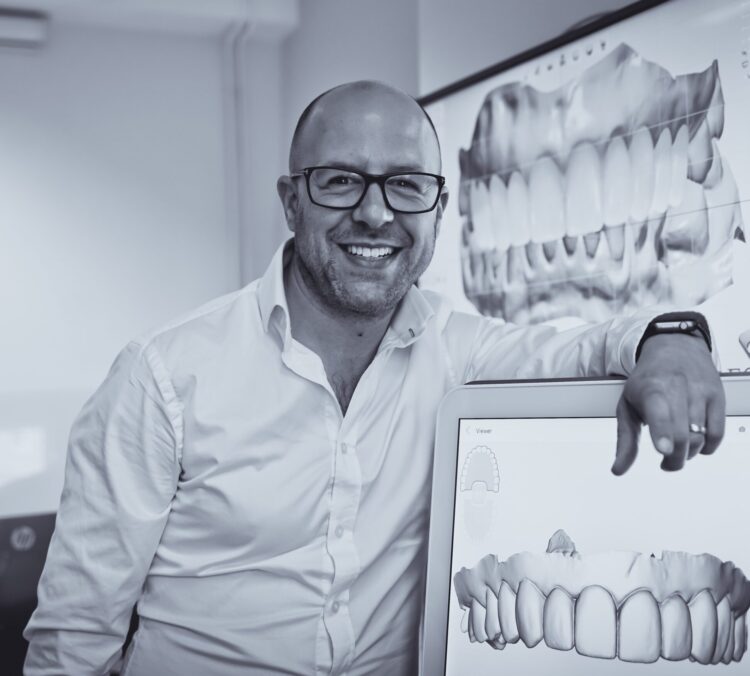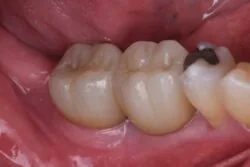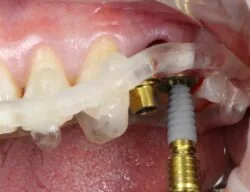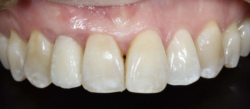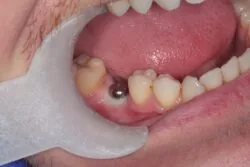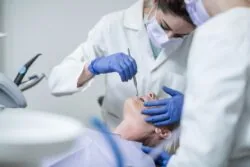Streamlining full arch dentistry with digital workflows

With a significant increase in the demand for full arch dentistry over the past decade, Marcos Whites gives us a step-by-step guide on how digital workflows can be implemented to support these procedures.
The UK population is living longer, with Census 2021 confirming that over 11 million people (18.6% of the population) were aged 65 years or over[i] – that’s a 2.2% increase since the previous census in 2001. As the ageing population continues to rise, so too will their expectations – and nowhere is this more prevalent than in the growing demand for full arch dentistry.
Particularly suitable for patients with a failing dentition, patients are increasingly aware of the aesthetic and lifestyle benefits that full arch can offer them. Combine this with the growing awareness for immediate functionality and treatment predictability, practitioners today need to seriously consider how digital technologies and workflows can support them in treating this ageing generation in 2023 and beyond.
Game-changing innovations
Thanks to the introduction of digital technologies, dentistry has undergone a significant transformation in recent years. Among the notable advancements, the full-arch digital workflow stands out as a real game-changer, and I intend to support other practitioners in helping them understand the key steps to implementing a successful digital workflow in their practice, from scanning and treatment planning to 3D printing and final restoration.
Having placed approximately 3,500-4,000 implants during my career, and 10% of these being full-arch cases, this clearly demonstrates that demand is high. Over the past decade, all our implant dentistry has been digital, including planning, scanning, and restoration. In this time, we have built up our processes to include an on-site lab with a team of digital designers and ceramists and off-site milling and on-site 3D printing capabilities.
The full arch surgical workflow is the cornerstone of our practice’s surgical procedures, and our digital restorative workflow has eliminated the need for analogue methods, thus increasing efficiency in the practice. These are the steps we take in our digital workflow:
Step 1: Digital scanning and treatment planning.
Advanced scanning technologies capture detailed images of the patient’s teeth sent to a digital design team. They create a custom design to achieve desired outcomes, allowing patients to visualise changes and provide feedback for collaborative treatment planning.
Step 2: Creating a model and template.
A physical model and template are made after design approval. The template guides the dentist during tooth preparation, and temporary restorations are created using liquid acrylic applied to the template. This gives patients’ temporary restorations that resemble the outcome, eliminating the need for multiple visits and improving satisfaction.
Step 3: Patient feedback and refinements.
Patient preferences and adjustments are incorporated into the digital design, fostering open communication and aligning the treatment plan with expectations. Precise modifications are made using digital technology, enhancing the overall outcome and creating a sense of ownership and confidence in the treatment plan.
Step 4: Replicating the design.
Digital technology accurately duplicates the approved design, eliminating manual processes and reducing errors. The replicated design serves as a blueprint for the final restoration, providing a clear roadmap for implant placement and restoration.
Step 5: Full-arch restoration.
The design guides the placement of implants using advanced imaging technologies for precise positioning. Implants are placed within the restorative envelope to ensure stability and support. Meticulous planning and execution lead to predictable outcomes and patient satisfaction.
Step 6: Follow-up and adjustments.
Regular reviews assess temporary restoration performance and hygiene reviews can address tissue remodelling and guide optimal care. Scans are taken periodically to monitor progress and make necessary adjustments. This reiterative process ensures final restorations meet expectations and function optimally.
Digital workflows for increased efficiency
Implementing a digital workflow for full arch dentistry offers numerous advantages, including increased efficiency, enhanced communication with patients, and precise replication of designs. The streamlined process, from digital scanning and treatment planning to 3D printing and final restoration, allows us to achieve predictable outcomes and ensure patient satisfaction. By harnessing the power of digital technologies, we can transform our practices and provide exceptional full arch dentistry solutions, revolutionising how these procedures are performed.
With AI design also on the horizon, this means we can get designs in under five minutes and for a low cost. It’s a fascinating and amazing advancement, and in the future, dental nurses could be designing and finishing these restorations with 3D printers at the chairside.
There is continual evolution and innovation in the field of digital dentistry, with results continually improving and leading to better patient outcomes – my advice is to embrace the digital revolution sooner rather than later.
